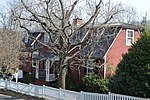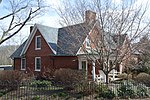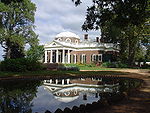Kluge-Ruhe Aboriginal Art Collection

The Kluge-Ruhe Aboriginal Art Collection of the University of Virginia houses one of the finest Indigenous Australian art collections in the world, rivaling many of the collections held in Australia. It is the only museum outside Australia dedicated solely to Indigenous Australian art. The museum houses many important breakthrough paintings of the Papunya Tula movement and Arnhem Land artists. The collection comprises more than 2000 objects in a variety of media, including bark and acrylic paintings, sculpture, photography, prints and artifacts. The director of the Kluge-Ruhe Aboriginal Art Collection is anthropologist Margo Smith . The museum is located at Pantops Farm, a university-owned property once owned by Thomas Jefferson in the Pantops neighborhood of Charlottesville, Virginia.
Excerpt from the Wikipedia article Kluge-Ruhe Aboriginal Art Collection (License: CC BY-SA 3.0, Authors, Images).Kluge-Ruhe Aboriginal Art Collection
Worrell Drive,
Geographical coordinates (GPS) Address External links Nearby Places Show on map
Geographical coordinates (GPS)
| Latitude | Longitude |
|---|---|
| N 38.025611111111 ° | E -78.4425 ° |
Address
Kluge-Ruhe Aboriginal Art Collection
Worrell Drive 400
22909
Virginia, United States
Open on Google Maps







